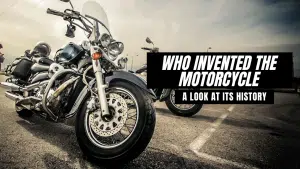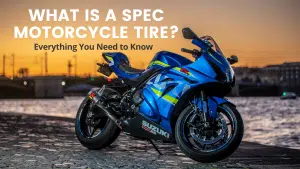There are many things that people don’t know about motorcycles. How many gears does a bike have, for example? And what is the difference between a manual and an automatic transmission? In this blog post, we will answer these questions and more! So if you’re curious about motorcycles, keep reading!
What are gears, and what do they do on a motorcycle?
Most people are familiar with gears, even if they don’t know precisely what they are. Gears are toothed wheels that mesh together, allowing one wheel to rotate another. This simple concept is used in various applications, from clocks to car engines. In a motorcycle, gears transmit power from the engine to the wheels. The number of gears in a motorcycle transmission determines the gear ratio and the difference in size between the input gear and the output gear. A higher gear ratio results in more torque at the wheels but less speed. A lower gear ratio does the opposite. Depending on the situation, a motorcycle rider can control both speed and power by changing gears. Gears are an essential part of any motorcycle, and understanding how they work can help riders make the most of their bike’s performance.
How many gears does a motorcycle have, and what are they for?
Most motorcycles have between five and seven gears, although some older models may have as few as three. The gears adjust the bike’s speed and power depending on the conditions. For example, lower gears are typically used when starting from a stop, climbing hills, or riding through thick mud or sand. Higher gears generally are used when riding at high speeds or going downhill. The gear ratio determines how many engine rotations are required to turn the rear wheel once. A higher gear ratio means that fewer engine rotations are required, resulting in a higher top speed. However, it also means that less power is available for acceleration. As a result, choosing the right gear is essential for getting the most out of your motorcycle.

What’s the best way to use the gears on a motorcycle for different riding conditions?
There’s a lot more to it than just twisting the throttle and going when it comes to motorcycle riding. Using the correct gear for the conditions you’re riding in is essential for safety and performance. You’ll want to be in lower gear when starting or riding at slow speeds. It will give you more control over the motorcycle and help to avoid stalling. You’ll need to shift into higher gears to avoid revving the engine too high as you speed up. When going downhill, it’s often best to use a lower gear to maintain control. And finally, when making sharp turns, it’s essential to downshift to have plenty of power on hand if you need to make an emergency maneuver. Ultimately, using the right gear for the conditions you’re riding in will help you stay safe and get the most out of your motorcycle.
Are there any tricks to shifting gears on a motorcycle to make it easier or more efficient?
One of the most important things to remember when shifting gears on a motorcycle is to use the clutch. The clutch helps disengage the engine from the transmission, making it easier to shift gears. You will need to pull in the clutch lever and give the throttle a little gas when shifting up. Then, use your left foot to push up on the shifter until you hear a click. Make sure to release the clutch slowly as you give the throttle more gas. You will need to pull in the clutch lever and use your left foot to push down on the shifter to shift down. Again, release the clutch slowly as you give the throttle a little gas. Shifting gears on a motorcycle can be second nature with practice.
Can you shift gears while braking or cornering, and should you try to do so if you’re not comfortable with it yet?
There’s a lot of debate among motorcycle riders about whether or not it’s okay to shift gears while braking or cornering. Some people argue that it’s an essential skill, while others say it’s best to avoid it until you’re more comfortable riding. So, what’s the truth? Is it okay to shift gears while braking or cornering on a motorcycle?
The answer is that it depends. If you’re braking hard and need to downshift to a lower gear, it’s beautiful. However, if you’re just lightly braking or cornering, it’s best to leave your bike in one gear. Shifting gears while braking or cornering can be dangerous if you’re not comfortable with it yet, so it’s best to avoid it until you have more experience. Suppose you decide to shift gears while braking or cornering. Be sure to do so smoothly and carefully.

What are some of the benefits of using gears properly on a motorcycle, such as improved fuel economy and better performance in different riding conditions?
Gearing is an essential aspect of motorcycle riding, and it can have a significant impact on both fuel economy and performance. Proper gear selection enables the engine to operate within its most efficient range, which can help to improve fuel economy by as much as 10%. In addition, using the proper gear for the conditions can help to improve traction and prevent wheel spin, both of which can lead to better performance. When riding in wet or icy conditions, selecting a lower gear will help ensure that the wheels maintain contact with the road. Similarly, when climbing a steep hill, using a lower gear will help to prevent the engine from overworking and potentially overheating. By choosing the right gear for the situation, riders can enjoy improved fuel economy and performance.
Whether you’re a beginner or a seasoned rider, understanding how to shift gears on a motorcycle is essential. With a bit of practice, you’ll be able to master the art of shifting gears and enjoy all of the benefits that come with it. Remember to take your time, be smooth, and use the clutch when shifting. And if you’re ever in doubt, it’s always best to err on the side of caution. Happy riding!





